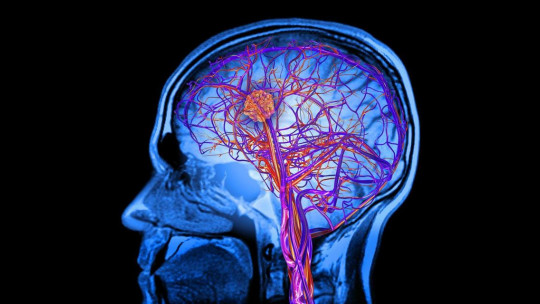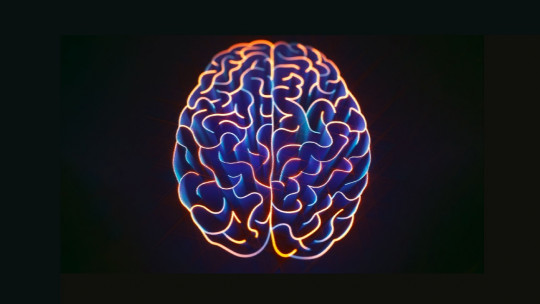There are multiple causes that can cause brain injury. Likewise, the repercussions of an injury to the nervous system can produce a wide variety of symptoms depending on the affected area and the type of damage that has occurred.
Examples of this may be problems understanding speech, perceiving stimuli through the senses or problems linked to the motor system. Within this last type of problem you can find the difficulty or loss of capacity when performing sequential movements, which are used on a daily basis when performing very different actions. We are talking about apraxias.
A little preamble: what kind of movements do we make?
To understand what apraxia is, it is necessary to take into account the great diversity of movements we make. Whether they are volunteers or not, The ability to move has allowed humans to develop as a species and be able to execute highly complex actions.
Some of the main movements that human beings perform are the following.
1. Reflexes
These types of movements tend to be intense reactions of little complexity and duration. generally due to the activation of a bundle of specific nerve fibers. These are small movements made involuntarily.
2. Voluntary movements
Voluntary movements are those that we perform with a specific goal. at a conscious level and that at least originally need the attention of the individual in order to be performed correctly. With enough practice, they can become automated.
3. Automatic movements
On this occasion a behavior is carried out voluntarily, but it is automated that is, conscious attention to the sequence of actions is not required to carry it out beyond choosing its start and/or end time. These are sequences of actions internalized thanks to practice and the person’s habituation to performing them, such as the set of actions we perform to eat soup, ride a bike, drive, sit or even talk or walk. It is in this type of movements that apraxias appear.
Describing the concept apraxia
Once the brief previous explanation is taken into account, it is easier to explain the concept of apraxia. It is understood as such cessation or high difficulty of the ability to carry out purposeful movements that require sequencing and coordinating movements making it impossible to perform certain automatic movements.
This alteration is generally due to a brain injury, with the subject who suffers from it maintaining the ability to understand the action they are asked to do, the task being easy to perform or being already known to the individual and maintaining correct muscle functioning. Generally the individual does not present anosognosia, so he is fully aware of his deficit.
Most well-known types of apraxia
As we have mentioned, apraxia implies an inability to perform sequences of coordinated movements in a sequential and orderly manner.
However, There is not only one typology of this problem, there are a large number of types of apraxia. Some of the main ones are those reflected below.
1. Ideational apraxia
In this type of apraxia, subjects have difficulty not only performing coordinated tasks, but also imagining them. not being in many cases able to imagine the correct sequencing necessary to carry out a specific behavior. However, the individual actions that make up the sequence can be performed correctly.
Also considered ideational apraxia (although in this case it is also called conceptual) is the difficulty in using objects due to the same causes, that is, the lack of knowledge of the sequence of actions necessary to use, for example, a comb. It is common in neurodegenerative diseases such as dementia due to Alzheimer’s disease or Parkinson’s, as well as in lesions of the dominant hemisphere and the corpus callosum.
2. Ideomotor apraxia
This type of apraxia is the most common in clinical practice. On this occasion, the subjects can correctly imagine the sequence of actions necessary to carry out a specific behavior, although They are not able to carry it out physically.
In ideomotor apraxia the deficit is found in a difficulty in planning movement. Within this typology, different subtypes could be found, such as orofacial, speech, extremity and axial apraxia (of the axis of the body, which affect actions such as sitting and posture). They are common in bilateral lesions and cortico-basal degenerations, with both sides of the body generally being affected.
3. Constructive apraxia
Regarding constructive apraxia, is based on difficulty in construction or drawing due to difficulties with spatial perception and hand-eye coordination. Thus, there is no correct association between the visually perceived image and the movements necessary to carry out the elaboration. Some subjects with this type of problem are unable to recognize the differences between the stimulus they are asked to copy and its elaboration, leading to discussions about whether the problem is one of movement or integration between information.
Also called visuoconstructive deficit, this type of apraxia is used as an indicator of cognitive impairment due to its early appearance in Alzheimer’s patients. It usually appears in patients with lesions in the right hemisphere, but a large number of cases have been observed in which the damaged hemisphere is the left one. The lesion is usually located in the parieto-occipital region, which is consistent taking into account the lack of coordination between vision (which is mainly located in the occipital lobe) and movement (present in the parietal).
Possible causes
Apraxias, as a result of brain injury, can have a wide variety of causes. Although the list of possible causes is much broader, some of them may be the following.
Cardiovascular accidents
Whether it is a hemorrhage or a stroke, Cardiovascular accidents usually cause the death of a part of the brain being the most common cause of the appearance of apraxias and other disorders linked to brain injury.
Craniocerebral trauma
A concussion that affects the brain can cause serious damage to this organ, which may or may not be reversible. Depending on the area damaged by the blow, or the possible contrecoup (that is, the blow produced on the opposite side of the injury due to the rebound against the skull), apraxia can easily appear.
Brain tumors
The presence of a foreign and growing mass in the brain causes damage to various areas of the brain both due to the tumor itself and the pressure exerted on the brain against the skull. If these damages occur in the areas responsible for the motor system or in association areas that integrate the coordination of movements, the appearance of apraxia is greatly facilitated.
Neurodegenerative disease
Disorders that cause progressive deterioration of the nervous system are closely linked to the presence of apraxias. In fact, one of the characteristics of cortical dementias is the presence of the aphaso-apraxo-agnosic syndrome which includes the progressive appearance of problems with speech, movement sequencing, and perceptual and intellectual skills.
Treatment
Generally being the product of brain injuries, apraxias are problems whose form of treatment will vary greatly depending on their cause. Although it is difficult to recover and although in some cases there may be sequelae, the type of treatment carried out in general tends to use therapy at a physical level, and rehabilitation or compensation for lost functions.









